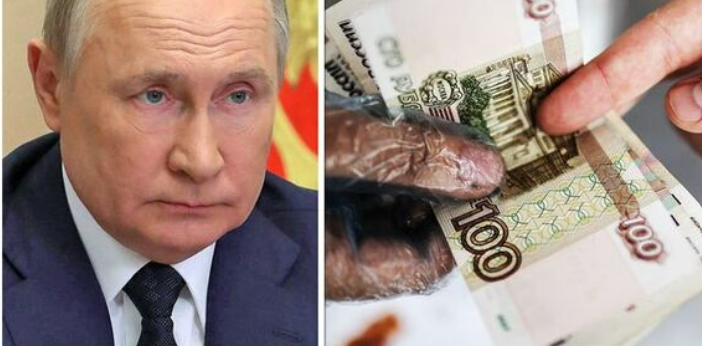Virendra Pandit
New Delhi: Forty days after Russia’s invasion of Ukraine, the USD 45 billion grain trade from the two countries is shifting towards other countries, including India, as the Russian economy has begun shrinking sharply in 2022 with inflation soaring because of the West and allies’ sanctions, the media reported on Tuesday.
Already, since the initial stages of the Covid-19 pandemic in May 2020, Russia’s manufacturing activity had contracted. Its war against Ukraine started on February 24, has further impacted it adversely because of material shortages and delivery delays faced by the factories.
According to the S&P Global purchasing managers’ index (PMI) for Russia, published on Friday, it dropped from 48.6 in February to 44.1 in March, showing a contraction. The fall was “broad-based, with sharp drops in the output, new orders, and (especially) the new exports orders components.”
Russia-watching economists projected that the West-led sanctions may push Russian gross domestic product (GDP) into a 12 percent contraction in 2022, while inflation may exceed 23 percent year-on-year.
The European Bank for Reconstruction and Development has also projected a 10 percent shrinkage in the Russian economy, the country’s deepest recession for three decades, with GDP then flatlining in 2023 and entering a prolonged period of negligible or negative growth.
Investment banking company Goldman Sachs has forecast a 10 percent contraction, while the Institute for International Finance think tank has projected a more damaging 15 percent plunge in Russia’s GDP in 2022 and another 3 percent in 2023.
With the Kremlin servicing a recent bond payment, a Russian sovereign debt default has not taken place, despite the sanctions by the West and its allies who have frozen huge portions of the Russian central bank’s USD 640 billion worth of foreign currency reserves.
However, after a month-long shutdown of exchanges, Russia’s stocks edged higher since they reopened on March 24. The Russian currency, the rouble, has also not suffered much with the capital control measures taken by the Central Bank of the Russian Federation.
But a more sustained recovery could come only after a peace deal between the two warring countries. “The spill-overs from the war will be felt acutely in Central and Eastern Europe (CEE),” said William Jackson, Chief Emerging Markets Economist.
“Industry will be hit by supply disruptions and higher inflation will weigh on households’ real incomes and dampen consumer spending. We expect the war to shave 1.0-1.5 percent points off growth in CEE this year.”
With disturbing reports surfacing about alleged civilian massacres by Russian troops in Bucha, 23 miles from capital Kyiv, and other Ukrainian towns and cities, the growth outlook for Russia may yet darken as they could push back peace talks and increase the threat of more punitive international sanctions.
On Sunday, Ukraine said they had found 410 bodies in towns recaptured from the retreating Russian forces around Kyiv. This could become part of a probe into Russia’s possible war crimes. Ukraine’s President Volodymyr Zelenskyy accused the adversary of genocide, but Moscow denied the charges that its forces killed civilians in Bucha.
According to reports, the European Union is planning to introduce fresh sanctions against Moscow and European Council President Charles Michel announced that “further EU sanctions & support are on their way.”
Amid sharp declines in Russia’s March PMIs, Goldman Sachs noted on Friday last that activity across some economies was robust, with gains in Hungary and South Africa offset by declines in Poland and the Czech Republic.

